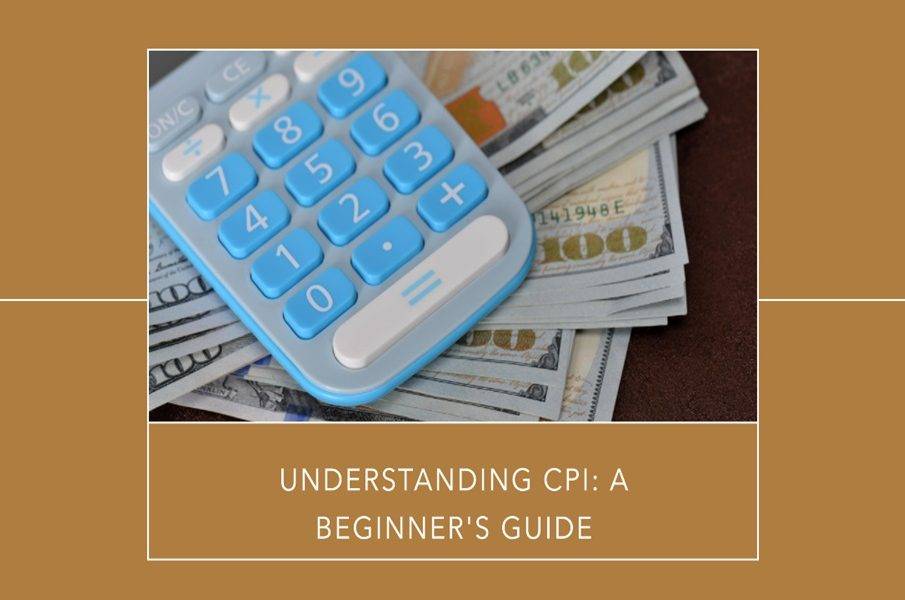What Is CPI

Ever wondered why your grocery bill seems to inch up every year, or why the cost of a movie ticket isn’t what it used to be? It’s all about the CPI, or the Consumer Price Index, a critical economic indicator that helps us understand these changes. It tracks the average price change over time for a basket of goods and services, reflecting what urban consumers are actually paying out there.
In this article, I’ll dive into how the CPI basket is carefully crafted from real data provided by thousands of families, and how it impacts our daily lives. From the food on our tables to the services we rely on, the CPI is the pulse of the economy. So if you’re intrigued by the forces that nudge the numbers on price tags, keep reading – you’re in for an insightful journey into the world of the CPI.
What is CPI?
When digging deeper into economic indicators, I often highlight the Consumer Price Index (CPI), as it’s one of the cornerstones for understanding economic health. The CPI reflects the average change over time in the prices paid by urban consumers for a basket of goods and services. This basket represents the day-to-day expenses like food, clothing, and medical care, serving as a microcosm for the broader economy.
The creation of the CPI market basket is an intricate process, underpinned by extensive data collection. Expenditure information is the backbone of this basket, provided by detailed survey input from families and individuals. They document their actual purchases, giving a clear picture of consumer spending patterns. Interestingly, there’s an inherent time lag in the data used for the CPI – for instance, the information for the 2020 and 2021 index drew from surveys conducted in 2017 and 2018.
Here’s an overview of the consumers’ contributions during that period:
| Type of Survey | Number of Consumers | Time Period | Contributions to CPI |
|---|---|---|---|
| Quarterly Interviews | 48,000 | Over 2 years | Spending habits data |
| Biweekly Diaries | 24,000 | Weekly for 2 years | Details on frequently purchased items |
This raw data goes through rigorous analysis to assign weights to different categories within the CPI index structure, accounting for the items’ significance in a typical consumer’s budget.
The CPI sample creation is another critical element in the puzzle. It follows a selection process known as initiation. A CPI data collector will select a specific item in the designated outlet that represents the category to be priced. For instance, if the focus is on cheese, the probability of selecting a particular type of cheese for the sample mirrors its market popularity. This ensures that the CPI sample is a thoughtful representation of what consumers are actually buying. If cheddar cheese in 8 oz. packages dominates sales, it’s more likely to be chosen over less popular package sizes, maintaining the relevance and accuracy of the CPI data.
How Is the CPI Calculated?
The process of calculating the Consumer Price Index, or CPI, starts with the data gathered from the Consumer Expenditure Surveys. What catches my attention first is the meticulous detail in which consumers’ spending habits are recorded. To grasp the comprehensive nature of this process, it’s crucial to recognize that the collected data doesn’t take effect immediately; instead, there’s a lag, ensuring the information is accurate and reflective.
For instance, the CPI figures for 2020 and 2021 were based on expenditure information from 2017 and 2018. This information comes to life through the active participation of consumers across the nation. But how comprehensive is this data collection? Let’s take a look at the numbers:
| Year | Weekly Diaries | Quarterly Interviews |
|---|---|---|
| Over 2 Year Period | Approximately 24,000 | Approximately 48,000 |
The purpose of these diaries and interviews is crystal clear: to assign weights to different item categories within the CPI index. Imagine the process as a well-balanced scale, where each item’s weight is determined by its importance to the average consumer. The higher the expenditure on a category, the more it tips the scale, influencing the overall CPI reading.
After establishing these weights, the CPI sample is created. This is when the concept of initiation comes into play. I find this step particularly fascinating because it’s where the rubber meets the road – it’s when an actual price is attached to a product from the CPI market basket.
Consider this: If 70 percent of a store’s cheese sales come from 8 oz. packages of cheddar cheese, that’s the item most likely to be selected for pricing. Popularity drives the process, underscoring the CPI’s role as a gauge for what consumers are actually spending their money on.
I’m intrigued by the way this ensures a fair representation of consumer spending in the market basket, making the CPI a dynamic, yet reliable indicator for tracking inflation and guiding economic policy. As you delve into the nuts and bolts of the CPI’s methodology, it’s this accuracy and relevance that stand out, highlighting why it remains an essential tool for economists and policymakers alike.
The Importance of the CPI
The Consumer Price Index, or CPI, is more than just a set of numbers—it’s a vital economic indicator that influences my financial decisions and those of businesses and governments alike. Understanding shifts in the CPI enables me to make informed choices about spending, saving, and investing. For policymakers, it guides decisions on interest rates and economic policies that have far-reaching effects on the country’s fiscal health.
Businesses also rely on CPI data to adjust salaries, set rental lease rates, and index pension benefits. This ensures wages and retirement funds keep up with inflation, helping to maintain the purchasing power of consumers like me. Without adjusting for CPI, fixed incomes could fail to meet the rising cost of living, placing undue hardship on retirees and workers alike.
Moreover, the CPI is instrumental in macroeconomic analysis. It serves as a key gauge of inflation, indicating whether prices are rising or falling and at what pace. Since inflation affects my wallet directly—from the cost of groceries to the amount I pay for utilities—keeping an eye on the CPI helps me anticipate changes in the cost of living. As prices change, they affect my personal budget and the wider economy, making the CPI an essential tool for forward planning.
It’s also important to mention that the calculation of the CPI, with its detailed basket of goods and services, reflects real spending patterns. From the 24,000 weekly diaries to the 48,000 quarterly interviews that established the CPI market basket, the data represents a comprehensive picture of consumer behavior. This meticulous process ensures that the index is a true reflection of what’s happening in the market.
The initiation procedure for new items in the sample, based on sales proportions, guarantees that the CPI remains current and accurately portrays prevailing consumer preferences. If cheddar cheese in 8 oz. packages dominates market sales, it’s given greater emphasis in the CPI calculations than less popular sizes, mirroring how I and the average consumer spend our money. This approach ensures that CPI readings are relevant and precise, but let’s go deeper into the implications of these readings for our everyday lives.
How the CPI Impacts Daily Life
When I think about the Consumer Price Index, or CPI, it’s clear that it’s more than just a set of numbers on a report; it embodies the fluctuating economic landscape that directly influences my financial well-being. The CPI is integral to understanding how much bang I’m getting for my buck. In other words, it measures my purchasing power. Essentially, it paints a picture of how inflation affects my ability to buy goods and services over time. The harsh truth is, as prices hike due to inflation, my dollar doesn’t stretch as far as it used to.
Beyond my wallet, the CPI plays a pivotal role in shaping the economic policy. When the Federal Reserve monitors inflation, although it mainly focuses on the PCE, it doesn’t turn a blind eye to CPI data. The trends in the CPI can influence major decisions like raising interest rates, which in turn impacts my mortgage, car loans, and even the interest rates on my credit cards.
For many Americans, adjustments in government benefits hinge on the CPI inflation rate. The federal government recalibrates payouts for Social Security through COLA and updates food stamp allowances, ensuring they remain relevant despite the inflationary trend. These adjustments help maintain the standard of living for millions, particularly when inflation threatens to diminish the real value of these benefits.
I’ve noticed how CPI figures creep into the workplace too. In many businesses, salary increases are intrinsically linked to the CPI inflation data. Firms often use this information to adjust wages, keeping pay in step with the rising cost of living. Staying competitive with wages is crucial for companies, and the CPI serves as a dependable metric.
While the CPI is a beacon of insight for urban spending, I’m aware of its limitations for those in rural areas. It doesn’t fully capture their spending habits, creating a blind spot in economic planning. Plus, it’s not always reflective of inflation’s disparate impact on different demographics, such as young individuals facing escalating educational expenses, or older adults burdened by the soaring cost of elderly care. Despite this, it’s widely used to help businesses and policymakers navigate the shadows and highlights of our economy.
Conclusion
Understanding the Consumer Price Index is key to grasping the nuances of our economy. It’s not just a number; it’s a reflection of our spending habits and a beacon for financial decision-making. As we’ve seen, it’s meticulously crafted from comprehensive data to ensure it accurately mirrors the cost of living for urban consumers. While it’s not without its limitations, its influence on economic policy and personal finance can’t be overstated. I’ve seen firsthand how the CPI informs everything from interest rates to wage negotiations, proving its value as an indispensable economic tool. As consumers, businesses, and policymakers alike look to the CPI for guidance, it’s clear that this index will continue to shape our financial landscape for years to come.








